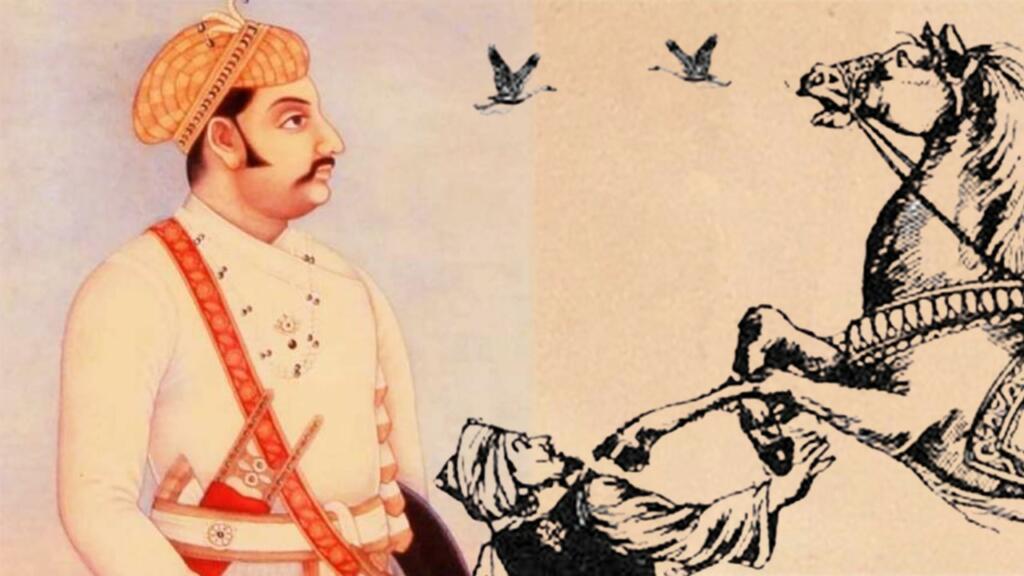Indian history is filled with the chivalry of not only the kings, cavalry, or infantry but also the horses. Yes! Chetak is the one who gained immense respect for his loyalty to his master, Maharana Pratap. But Chetak is not the only example of a valiant animal serving his master. Shubhrak was another such horse that became synonymous with bravery, courage, and fearlessness.
Rise of Qutub-ud-din Aibak
The proponent of the Mamluk Dynasty of the Delhi Sultanate, Qutub-ud-din Aibak, was the slave of Muhammad Ghori and established the dynasty after Ghori’s death. Although, he ruled for only four years, many later scholars praised him for his generosity.
He was given the titles of “Lakh-baksh” and “Farishta.” But the reality is far from all this. In reality, he was a cruel ruler who, in order to expand his kingdom, shed the blood of innocents mercilessly. However, the regional rulers fearlessly countered him. One such king was of Chittorgarh.
The Rawal king of Chittorgarh, Samar Singh, had two wives. First wife, Prithabai, sister of Prithviraj Chauhan, had a son named Kalyan Rai. Rawal Samar Singh’s second wife was Kurma Devi, daughter of Nayaki Devi, a solanki queen of Gujarat. She gave birth to Karn Singh.
In the second battle of Tarain(1191-92 AD), Prithviraj Chauhan fought Muhammad Ghori. Samar Singh and his son Kalyan Rai, fighting behind Prithviraj were martyred. When, Prithabai heared the news, she felt her life useless and ordered to mount the pyre.
She decided to be sati out of love for her husband. Kurmadevi, on the other hand, was filled with anger and a desire for vengeance. She also wanted to make sure that his son’s accession to the throne remained unrestrained.
Also read: Rezang La war: Timeless legacy of Major Shaitan Singh
Kurma Devi struggles and ultimately defeated Aibak
After the battle, Muhammad Ghori retreated to Multan and installed Aibak as the chief of Delhi and Ajmer. Since Karn was a minor during the death of Samar Singh, Kurma Devi became regent and started the preparation of war. Later, in 1194, following Dussehra, she, along with 9 rajas and 11 chiefs, marched towards Delhi. During the war, she injured Aibak nearly to death. The Aibak army fled, and Kurma Devi retreated to Chittorgarh.
Aibak returned and strengthened his hold on the sultanate. He attacked Mewar again and captured Karn Singh and his horse Shubhrak. Along with plundering Mewar’s wealth, he took the captive King Karn and his horse to Lahore.
Also read: The reason why no Indian filmmaker has made a movie on “Indian Naval Mutiny of 1946”
Brave Shubhrak
In an attempt to escape, Karn Singh was caught. Aibak gave the order to behead him. In order to increase the disgrace, he decided to play “Chovgan” with the beheaded skull of Karn Singh. But Aibak was destined for something else. The next day, when Aibak arrived to witness the beheading, he was on Shubhrak. Shubhrak recognised his master and began to neigh and cry.
A moment later, Shubhrak became uncontrollable as Karn Singh was freed from the chains and was ready to be beheaded at any time.
Shubhrak, enraged, threw Aibak from above him and began hitting him with his hooves. In almost 12–15 hooves, Aibak’s face and chest were damaged, and he died on the spot. In the midst of the stampede, Karn Singh quickly sat on Shubhrak and began to converse with the wind.
Running non-stop for many days, Shubhrak stopped at the gates of Udaipur Fort. Shubhrak was still, standing like a statue. Filled with honour, love, and respect for his loyal horse, Karn Singh got down and caressed it. Shubhrak suddenly fell to the ground and was dead.
A horse is better than a slave
The horse gave a sacrifice that was not ordinary. It not only saved his lord from execution, but also ran until its last breath to the safest place possible. This was the perfect example of the Indian tradition of “swami-bhakti” (loyalty to the master). The best part is that while Aibak was a slave and a human, he succeeded his master by shedding blood, whereas Shubhrak was a horse that gave its life to save its master’s life while it was an animal.
Almost all historical texts mention Aibak’s death from a horse fall while playing Polo. However, it is hard to believe that someone who has ridden the horse since the age of 11 falls from the horse and dies on the spot.
Comparing Qutub-ud-din Aibak with Shubhrak, we can actually understand that Indian horses were far braver and more loyal than the slaves from the sultanate. That is most likely why the courageous story of Shubhrak was hidden by contemporary Muslim writers.
Support TFI:
Support us to strengthen the ‘Right’ ideology of cultural nationalism by purchasing the best quality garments from TFI-STORE.COM
